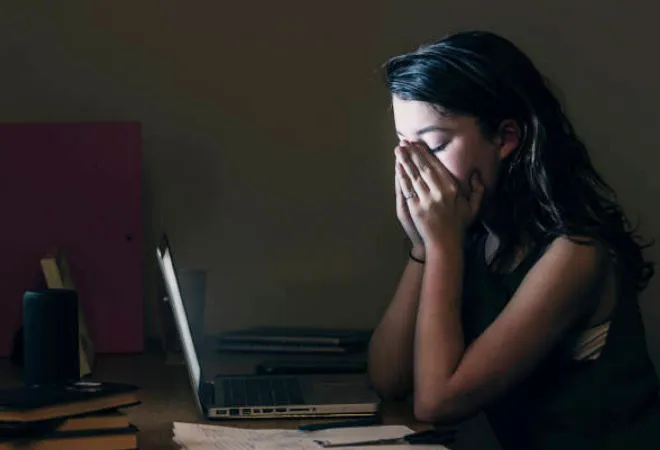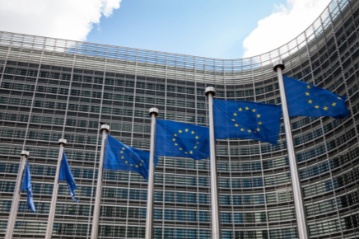
This article is part of the series Children and the Pandemic: An Analysis Across Countries
The plight of children’s during the pandemic still remains a rather under-researched topic, especially from the cross-cultural perspective. Societies across the globe face a variety of COVID-19-related challenges that largely depend on economic, political, and socio-cultural conditions. One thing remained common though: The voices of children were rarely heard in the public realm. Not that under normal circumstances they are particularly heard, but during the pandemic, other subjects and problems were, and continue to be, prioritised. Ultimately, the majority of discussions have been focused on healthcare, ways of introducing and maintaining lockdowns, conducting elections, or wider economic implications for society. The fate of children are seen as secondary to the needs of adults. As a consequence, many children were deprived of social contact, and had limited access to healthcare and education.
Children in conflict-ridden areas
In countries with ongoing military conflicts such as Syria, Haiti, or Yemen, the main challenges have been related to the lack or limited support of humanitarian organisations. Due to COVID-19, many development or humanitarian programmes decided to limit their scope and evacuate their staff, i.e., according to The New Humanitarian in May 2020, the United Nations pulled out over half of its remaining international staff from the Yemeni capital, Sana’a, to protect its staff from being infected with COVID-19. At the same time, a travel ban was introduced, which led to a limited exchange of humanitarian workers and development officers. As a consequence, children living in conflict zones face a double threat: The COVID-19 pandemic and simultaneous deprivation of support, which can even lead to death. In these vulnerable places, children are most susceptible to life threatening issues like violence, malnutrition, hunger, health problems, amongst others. According to UNICEF, nearly one-third of all children in Haiti are in urgent need of emergency relief. The reason is not restricted to only COVID-19, but also violence, and constrained access to clean water and healthcare.
Children are most susceptible to life threatening issues like violence, malnutrition, hunger, health problems, amongst others.
Children in the developing world
On the other hand, for many children in the developing world, distance learning is not an alternative due to the lack of access to the internet, poor technological infrastructure, or high prices of energy. Moreover, on many occasions, the break from school does not mean the actual possibility of social distancing. Parents that have to go to work to afford living costs, leave their children with their neighbours, or within the local communities. The ability to practice social distancing still remains a privilege of the rich who can afford a separate household with an individual kitchen and toilet, as well as a caretaker for their children.
Even in some of the Central and Eastern European countries including Poland, access to the internet and the purchase of a computer for the child posed difficulties to the parents. According to data gathered in Ekspertyza-3 published by the Open Eyes Economy Summit (OEES), about 10 percent of Polish households with children (one or more) have only one computer or tablet. In 28 percent of large families, there are only two computers or tablets. In such homes, computers or tablets must be shared between the children, and also with remotely working parents. Based on the available data, the OEES estimated that this problem affects approximately 25 percent of students. As a result, children from wealthier families had better access to education. In this way, the COVID-19 pandemic results in the widening of inequalities amongst the poorest.
The welfare states faced challenges that we could describe as the “surplus dilemma”, as many children spent too much time in partial isolation in front of their computer and smartphone screens.
Children in developed countries
On the other hand, the welfare states faced challenges that we could describe as the “surplus dilemma”, as many children spent too much time in partial isolation in front of their computer and smartphone screens. These new circumstances followed by stress and lack of direct social contact led to psychological and psychiatric problems. According to various sources, psychiatrists have noted more cases of depression, anxiety, problems with nervous changes, as well as post-traumatic stress disorder (PTSD) amongst children and teenagers. Professor Małgorzata Janas-Kozik, who manages the Department of Psychiatry and Psychotherapy of Developmental Age at the Medical University of Silesia, emphasised that anorexia-related illnesses are on the rise during pandemics. Moreover, Prof Janas-Kozik mentions that teenagers are more susceptible to cyber violence.
As a consequence of isolation, many students found themselves struggling to maintain friendships and build their social networks. Social media became a window to the world, a false mirror of reality. Taking into consideration photo editing practices and the emulation of affluent lifestyles that are viral across social media channels, many teenagers might have felt alienated and depressed. This issue is seconded by the Maslow’s concept of the hierarchy of needs that emphasises the human need for the sense of belonging, acceptance, and social contact.
As a consequence of isolation, many students found themselves struggling to maintain friendships and build their social networks. Social media became a window to the world, a false mirror of reality.
Regardless of the type of society and attached problems and challenges, the management of children’s situation during the pandemic, and its adaptation to the local or regional conditions should have been at the very heart of discussions. Implementing centralised legal acts and decisions benefited only a few and discriminated against the others; for instance, if parents in slums had to go to work and they decide to leave the children with the neighbours or other people within the district, the policymakers could potentially lift the break from schools, because children were exposed to other kids anyway. Save the Children’s Resource Centre highlights that people in poor urban contexts are confined to small rooms; children are frustrated because they have no space to play and whatever space they do have is limited to small yards or passages shared by neighbours. Moreover, in countries like Nepal, online education was more wishful thinking than reality, as according to Nepal’s Education Department, only 48 percent of Nepalese public schools were online and enforced digital learning.
Possible solutions
The first answer to the abovementioned challenges is maintaining flexibility. For example, during the lockdown in the Polish region of Podlasie, teachers decided to adjust the lessons timetable to the needs of the families. If the teachers knew that a family had two children but only one computer, and both of them would have classes from different topics at the same time, they rescheduled the lesson for the second child.
The second solution is adjustment, i.e., to adjust centralised decisions taken by policymakers in the capital cities to local conditions and contexts, in order to answer the needs of local people. Switching to online education is not an option for children deprived of internet access and technology. Therefore, offline learning in smaller groups for the ones without access to online education could be a solution, especially in regions with modest numbers of new infections.
The views expressed above belong to the author(s). ORF research and analyses now available on Telegram! Click here to access our curated content — blogs, longforms and interviews.




 PREV
PREV


